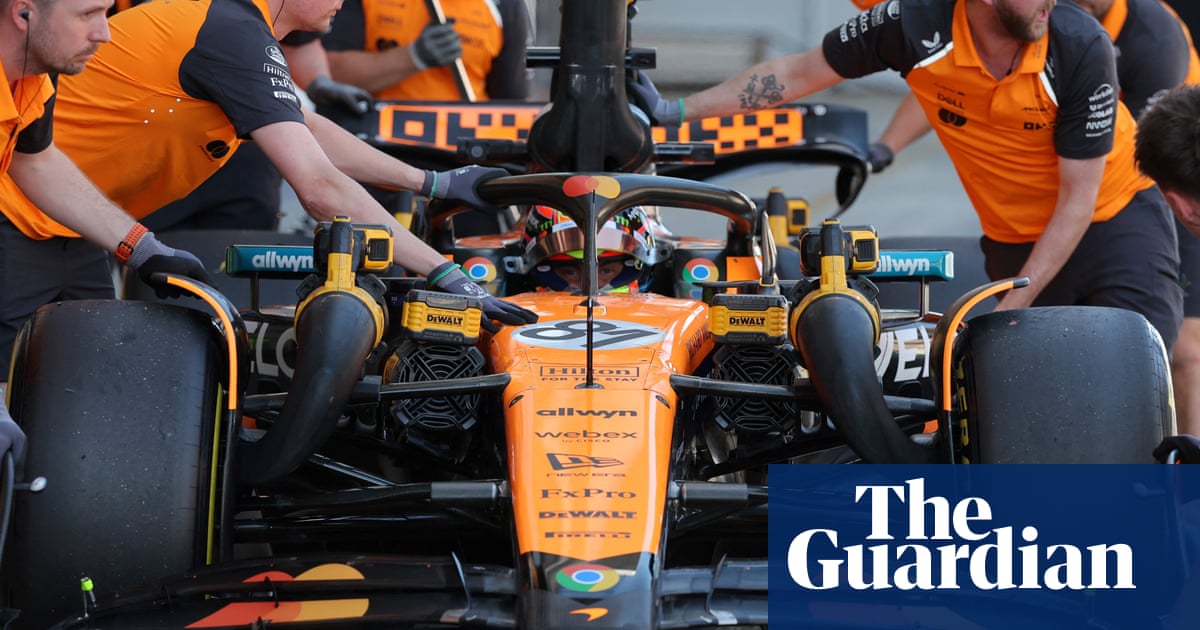All the talk in Spain this week has been about the potential impact of the FIA’s clampdown on the flexing of front wings and the governing body’s hope this might close upthe pecking order on the grid. Certainly those chasing the dominant McLaren were optimistic that might be the case.
The technical regulation was imposed as teams look to push the boundaries of the rules, with a flex in the wing under load affording the maximum downforce in corners. In order to maintain a level playing field, the wings must now pass a deflection test measuring the leeway of their flex. This has been reduced from 15mm to 10mm.
Such is the minutiae that engineers and regulators adore, but where it matters is in racing terms. The adjustment was brought in over concerns that McLaren were exploiting it to their advantage. The FIA decided to impose a reset but the front wing is such an integral part of the car that it allowed until now, the ninth round of the season, to develop the new models.
Red Bull have intimated their doubts over McLaren’s wing legality, front and rear. The regulations on the rear wing were tightened for the Chinese Grand Prix and McLaren still emerged on top. Their team principal, Andrea Stella, had been bullish that the changes would have no effect on the strengths of their car and believed it meant their rivals were focused on the wrong things.
Then there are teams such as Ferrari, who have not exploited the potential advantages as much as other squads and who may hope to make gains by their rivals losing a little. Their team principal, Fred Vasseur, said they had been working “for ages” on what he considered might be a “gamechanger”. There is also the consideration that it may affect tyre degradation, given it is a key part of the airflow over the car. This is an area where McLaren have had their biggest advantage, able to push harder and longer on their tyres, a strength which will be particularly notable on the high temperature and high-speed Circuit de Barcelona-Catalunya which puts a heavy load through the rubber.
Whether this is the case will not be truly discernible until the race and the teams put in a full stint in the blazing sunshine on a circuit that offers the ideal test bed to ascertain how these changes have panned out.
McLaren’s Lando Norris, who won at the last round in Monaco and now trails Oscar Piastri, his teammate and the championship leader, by three points, was convinced the changes would have no effect on McLaren and indeed the team had already debuted their new version of the wing in practice at Imola.
Certainly in first practice they appeared to have nonchalantly shrugged off the changes. Norris was once more comfortably quickest, more than three-tenths clear of Max Verstappen in second with Lewis Hamilton and Charles Leclerc in third and fourth for Ferrari, with Piastri fifth.
Verstappen, the defending champion, has already noted he did not expect the changes to make a major difference to the Red Bull and his team principal, Christian Horner, said he believed it was too early to tell if there had been any impact on other teams.
“The change is reasonably subtle, but it is reasonably significant,” he said. “Now, whether it’s a net or same effect for each of the teams is difficult to tell. Still early days but the net effect to us has been rather small.”
By the end of second practice the pecking order remained very familiar – Piastri more than two-tenths clear of the Mercedes of George Russell, Verstappen third, Norris fourth and Leclerc fifth, suggesting it is very muchplus ça changein Spain and leaving McLaren with a firm hold on the championship.
